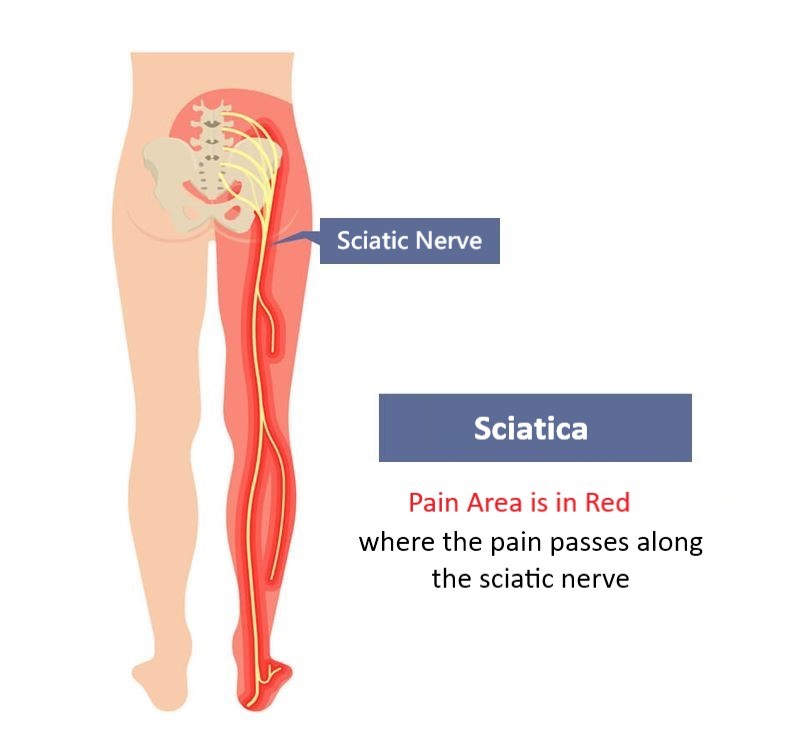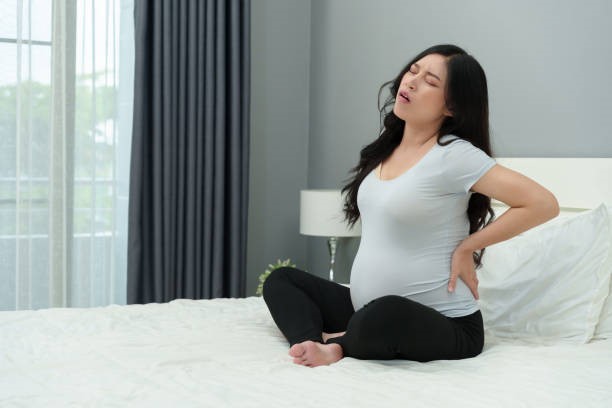What is the Sciatic Nerve?
The sciatic nerve is the longest and thickest nerve in our human body. It combines with the nerve roots of the fourth and fifth lumbar vertebrae (L4 to L5) and the first three sacral vertebrae (S1, S2 and S3). The sciatic nerve gathers nerve branches in the lower back, passes through the buttocks and extends down, along the back of the thigh, branches at the knee, and then to the sole of the foot. It provides almost the entire nerve connections over the surface and muscles of feet, hamstring muscles and calves. Therefore, when sciatica attacks, not only at the lower back, it can cause pain or discomfort from the waist, down to the feet, and even to the instep or sole of the foot.

Function and Range of Control of the Sciatic Nerve
The sciatic nerve includes sensory and pain nerves, motor nerves (controlling muscle strength), and autonomic nerves (controlling urination, defecation, and sexual function). The range of control of the sciatic nerve in our human body are as follows:
- Waist
- Hips
- Legs
- Bladder (control urination)
- Rectum and anus (controlling bowel movements)
- sexual organs
Who are the High-Risk Group of Developing Sciatica?
Generally speaking, most patients suffering from sciatica are middle-aged and elderly people, but in fact, people of any age can develop sciatica. The causes of the disease also vary among patients of different age groups. Therefore, high-risk groups include:
- Young people: Most will cause intervertebral disc herniation due to sports trauma, wearing stilettos and high heels for a long time, etc.
- Pregnant women and women who have been pregnant: Due to weight gain in a short period of time, standing and sitting postures have changed, putting great pressure on the lower spine. In addition, hormones in the body soften the ligaments and soft tissues of the lumbar and sacral vertebrae, reducing the supporting capacity of the lower spine. Also, forward tilt of the pelvis will also compress the sciatic nerve, and gynecological diseases will compress the sacrum.
- Middle-aged and Elderly people: As age increases, intervertebral disc herniation and bone spurs caused by age-related degeneration are the main causes of sciatica. Broken pedicles of the spine cause the vertebral body to move forward, which may also cause sciatica symptoms.
- People who often bear heavy loads or sit for long periods of time: For example, those who frequently carry heavy objects and drivers who drive long distances may suffer long-term strain on the lumbar and sacral spine, making them prone to injury and premature degeneration.
- People who have inappropriate daily sitting postures: such as crossing their legs while sitting, sitting sideways, or keeping their wallets in their back pockets after sitting down, which may affect their sitting posture.
- Obese people: Being overweight can cause changes in the spine, increase pressure on the lumbar and sacral vertebrae, and accelerate strain.
- Diabetic patients: Due to the high blood sugar (hyperglycaemia) of diabetic patients, their nerves are exposed to a high sugar level environment for a long time. Sugar can also make the nerves of the body prone to disease and cause pain.
- People who have suffered from back trauma.




